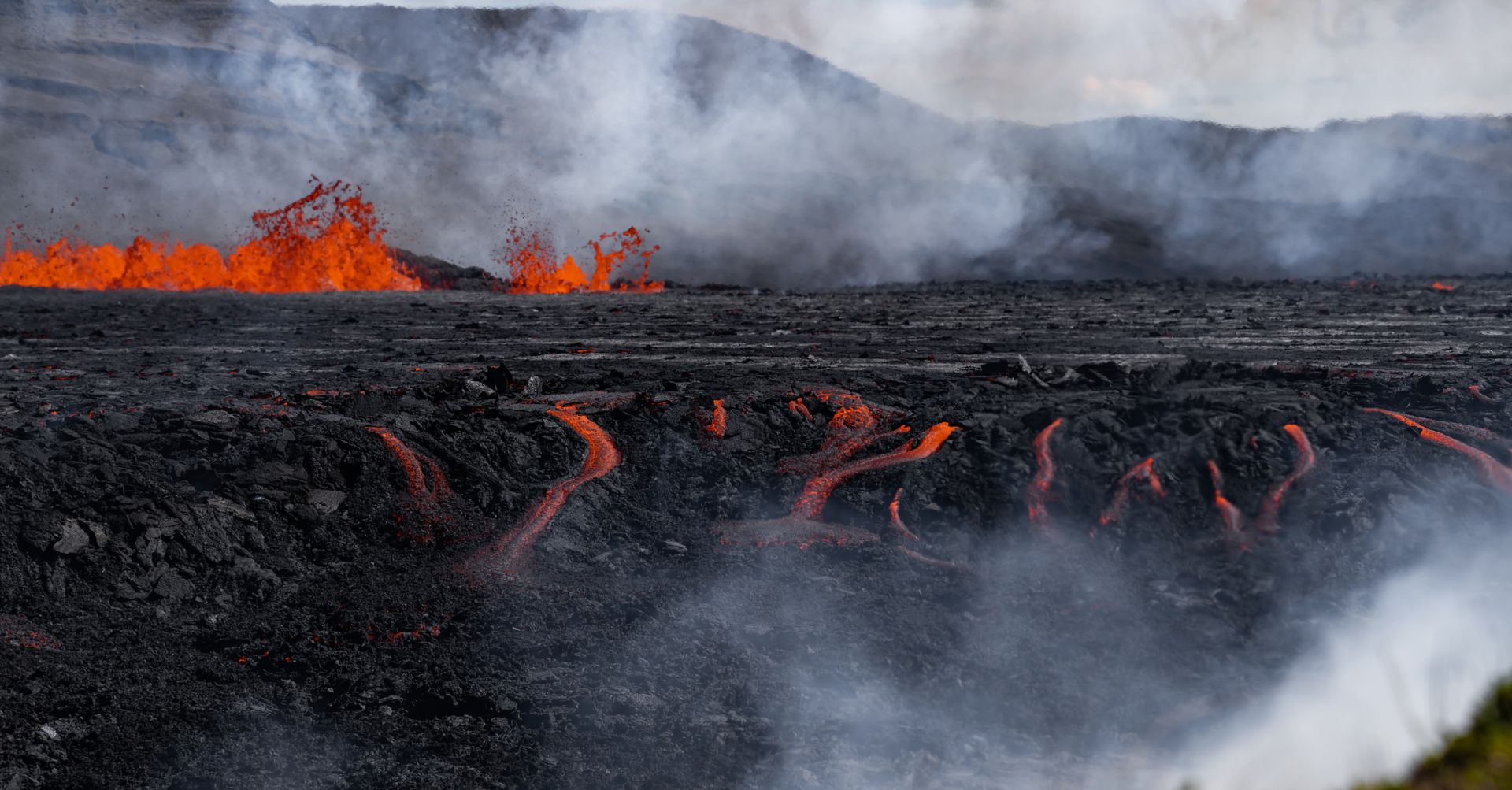 Itineraries
ItinerariesTop 11 Must-Visit Volcanic Sites in Iceland
Iceland has over 130 volcanoes located throughout the country, with 30 of them still active today. Some of them are famous for recent volcanic eruptions, while others have not erupted in thousands of years. There are so many notable Iceland volcanoes, it is hard to know which ones you can visit. With the nickname of The Land of Fire and Ice, you know you won’t be disappointed when it comes to Iceland's volcanic sites. Here are our top 11 must-visit volcanic sites in Iceland!
History
First, let’s discuss the history of Iceland's volcanic past. Iceland is located on the Mid-Atlantic Ridge, this is where the Eurasian and North American tectonic plates meet. This means the country is known for its heavy volcanic activity.

The first report of volcanic activity in Iceland is said to be around 20 million years ago. This is when the country began to form, and the volcanic eruptions helped shape and build it. As the eruptions became more and more common, the country became bigger.
It is said that the oldest rocks in Iceland are about 16 million years old, and you can find them in the Westfjords region.
What types of Volcanoes does Iceland have?
There are a few different kinds of Volcanoes in Iceland. This includes shield volcanoes, stratovolcanoes, and fissure eruptions.
Stratovolcanoes are known to be very tall, while shield volcanoes are lower to the ground. Fissure eruptions happen on cracks in the earth’s surface, which means they erupt longer.
Top 11 Must-Visit Volcanic Sites in Iceland
Icelanders are used to the country having eruptions, as there have been roughly 51 noteworthy eruptions over the past 1,200 years. Here are some of the must-see volcanic landscapes that you can visit in Iceland.
1. Eyjafjallajökull
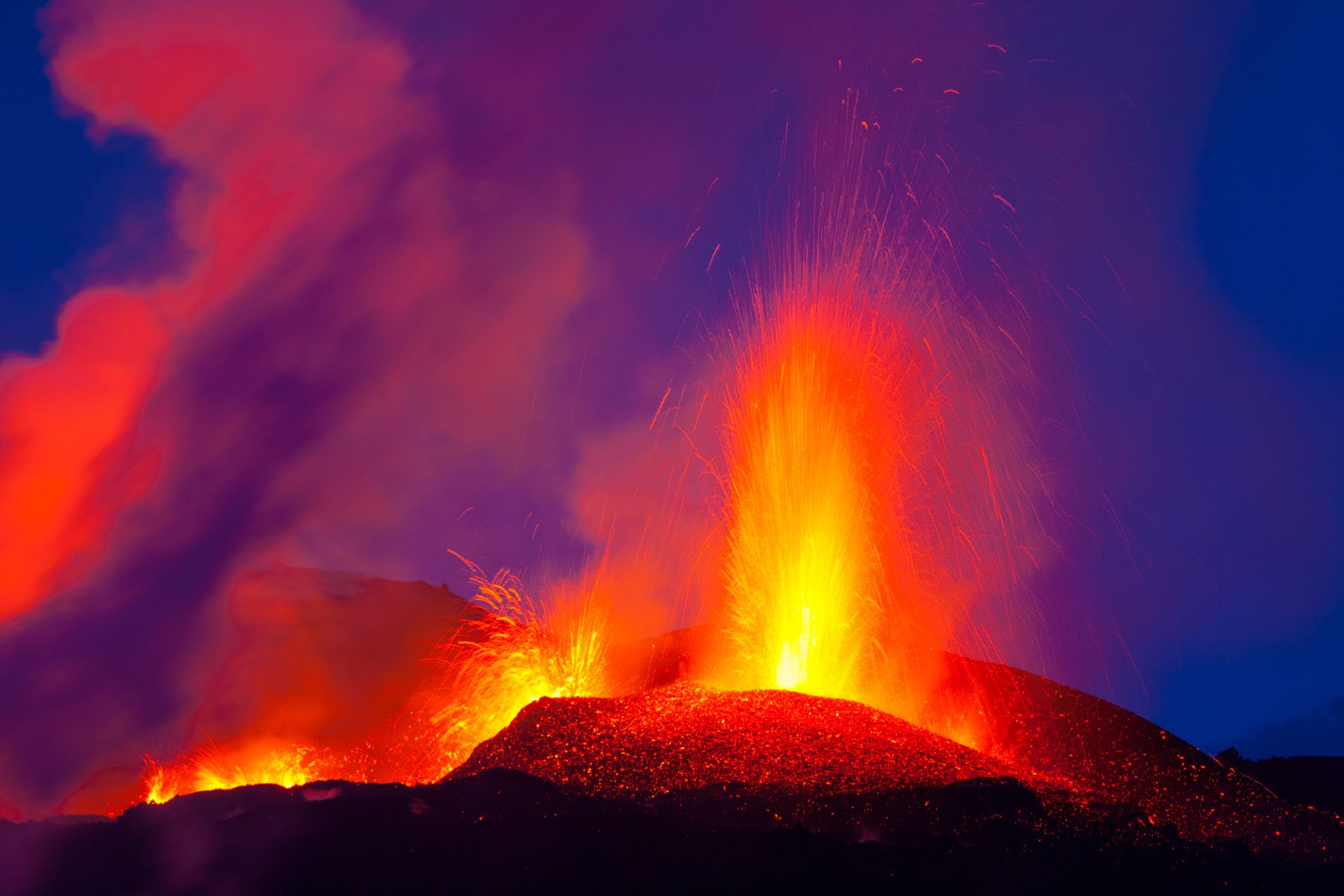
One of the most famous volcano eruptions in Iceland is Eyjafjallajökull, also known as Eyjafjallajökull, Eyjafjöll, or Eyjafjalla Glacier Volcano.
The famous eruption took place in 2010, lasting from January until May. It caused extreme flooding, which destroyed farms and roads in the town nearby. The smoke from the eruption spread smoke over a 7-mile radius, leading to the shutdown of commercial airline routes.
The eruption also created two new volcanic craters, named Magni and Móði, after the sons of the Norse God Thor. Travelers come from all over the world to see them for themselves and you can see them yourself by taking a short road trip with your Iceland rental car.
Take the hike to the Volcano if you dare, but know it is an eight-hour hike that is best taken on with a guide.
After, spend your afternoon soaking in the Seljavallalaug Hot Spring, a pool that was filled with ashes during the eruption.
2. Hekla

Visit the volcanic site of Heklatha, also known as the "Gateway to Hell". This stratovolcano is one of Iceland’s most active volcanoes in Iceland. It has erupted around 20 times since 874 with major eruptions occurring in 1300, 1766, and between 1947 and 1948.
These eruptions created layers of lava that once covered Southern Iceland. In fact, over 10% of the tephra created in Iceland during the last 1000 years flowed from Hekla.
If you want to hike to the summit of Hekla you can, but it can be a dangerous hike. It takes around 8 hours and is best done during summertime. The easiest way to access it is to take the 4-mile or 6-km-long route from the Northwest side or follow the Northern ridge.
If you do plan to hike to the top you need to have experience with glacier climbing and pack your glacier equipment.
Some adventurous Icelanders even hike up the Volcano and ski back down, a once-in-a-lifetime opportunity.
3. Krafla
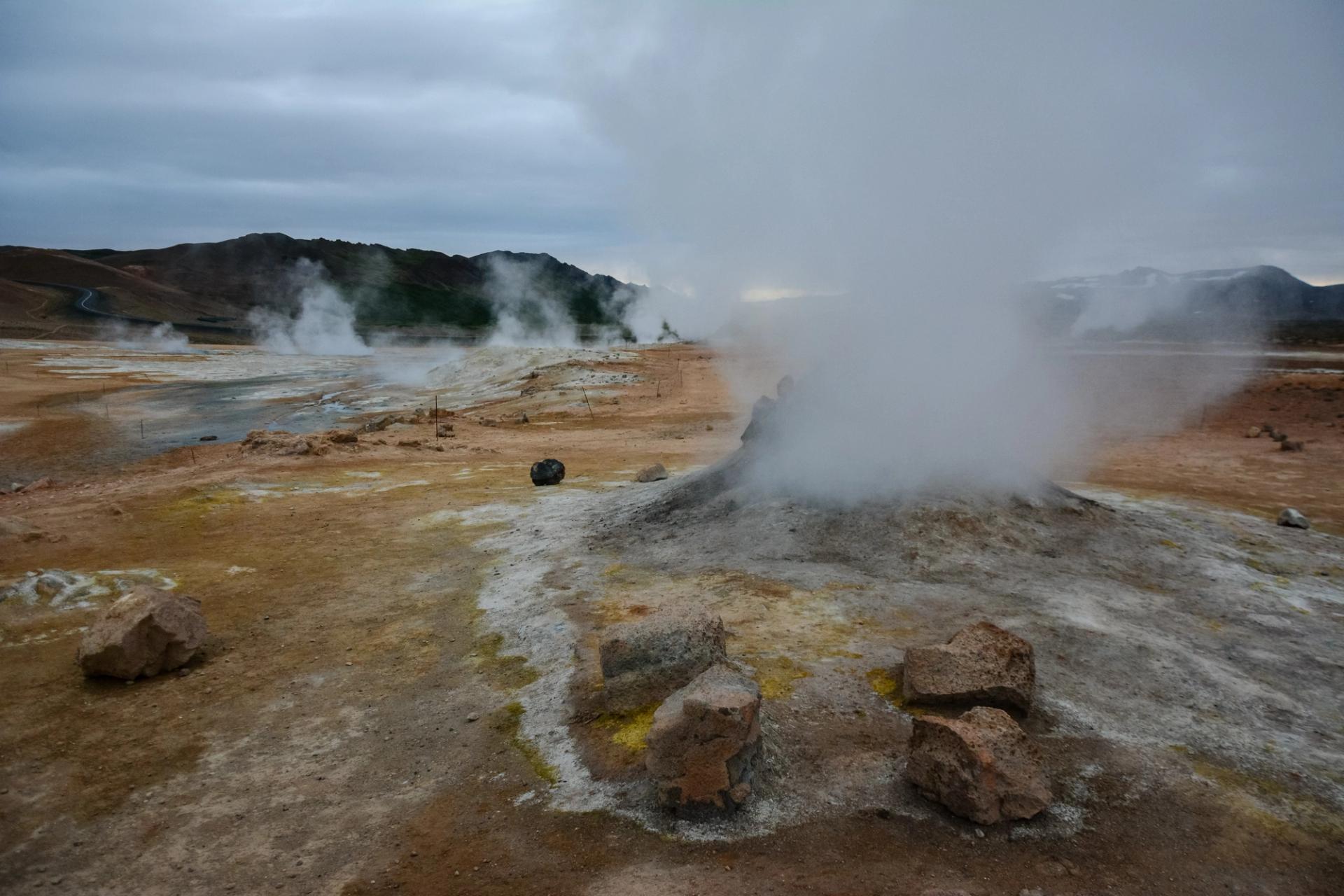
Located in North East Iceland is Krafla, one of the many famous Iceland volcanoes. Krafla is a volcanic caldera that has erupted 29 times over the past few centuries.
Travelers can explore the geothermal fields around the caldera, which are home to hot springs, bubbling mud pools, and fumaroles.
The volcano's last eruption took place between 1975 and 1984. During this time there was a volcanic episode within the Krafla volcano, which was also known as the Krafla fires. The fires consisted of 9 volcanic eruptions.
You can visit the infamous Viti Crater at Krafla. This special Víti was formed in 1724 when a massive five-year eruption took place, also known as the Mývatn Fires. You could even see the lava shooting in the sky from different areas in the country.
Today the Viti attracts visitors from all over the area due to its turquoise green and blue water that fills a depth of 984 feet or 300 meters. Enjoy this 0.5-mile trail to the crater which takes a quick 15 minutes to complete.
It is important to know that you absolutely cannot swim in the Viti. The temperature is unbearable and would injure anyone who attempted this. At one point in time, you could bathe in these waters.
But after the eruption which occurred between 1975 and 1984, the water spiked upwards in temperature. This Viti and Volcano are better enjoyed from afar, where you can still take in the scenery of Krafla.
4. Askja

Askja is an active volcano situated in a remote part of the central highlands of Iceland. This area can only be accessed with a 4X4 Vehicle since you will be driving an F-Road to get there.
The Volcano sits in the Dyngjufjöll mountain range which is part of the Vatnajökull Glacier National Park. The word “Askja” is Icelandic for “Caldera.” Calderas are volcano carters that form after a volcanic eruption.
Askja has erupted several times over the past two thousand years. It is said that it drove people away from settling in East Iceland after 1875, due to the fear of eruptions. The last eruption took place in 1961 and the volcano is still active and could erupt at any time.
Visit the amazing Lake Askja which is Iceland’s deepest lake It formed in 1875 when a powerful eruption occurred. After, the magma chamber ceiling began to decrease, stopping almost around 800 feet or 250 meters below ground. The area then filled with groundwater, forming the beautiful Lake Askja. You cannot swim in the lake due to its cold temperature
There is also the Viti Crater here, which is known to be one of the most famous Vitis in Iceland, sharing a spot with Kafla. These lakes were formed from volcanic eruptions.
Unlike Krafla, you can swim in this Viti Crater! The temperature changes, depending on how much glacial meltwater the crater has. You can expect an average of 86°F or 30°C, a perfect soaking temperature.
5. Surtsey
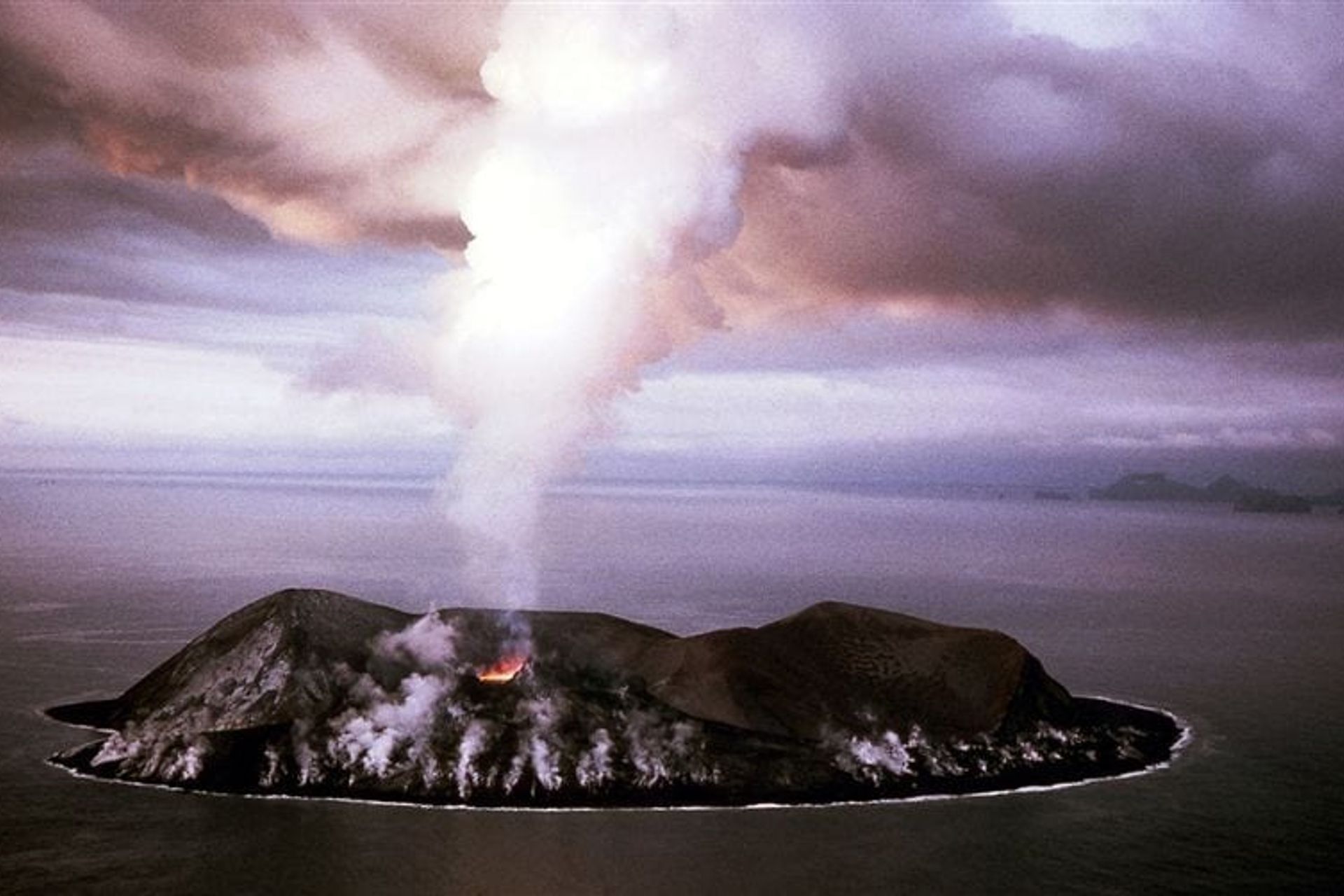
While hiking a Volcano is an amazing experience, viewing one from a boat can be even cooler. That is why Sutrsey, Iceland’s island volcano, earned a spot on our must-visit volcanic sites in Iceland list.
This volcano was formed by an eruption that took place under weather in 1963. It is now a UNESCO World Heritage Site that can only be visited by scientists and researchers. The volcanic island sits in the sea and is viewable from neighboring islands.
Since you cannot visit the volcano yourself, you can see it by taking an Iceland volcano tour by boat around Surtsey. This three-hour private tour will bring you around the world-famous Surtsey. You can have up to 12 people on the boat. It is an expensive endeavor, but if you are traveling with a group you can split the cost between your party.
A cheaper option is to visit the Surtsey exhibition at the Eldheimar Museum in Heimaey. Where you can learn all about the volcanic systems in the area.
6. Eldfell
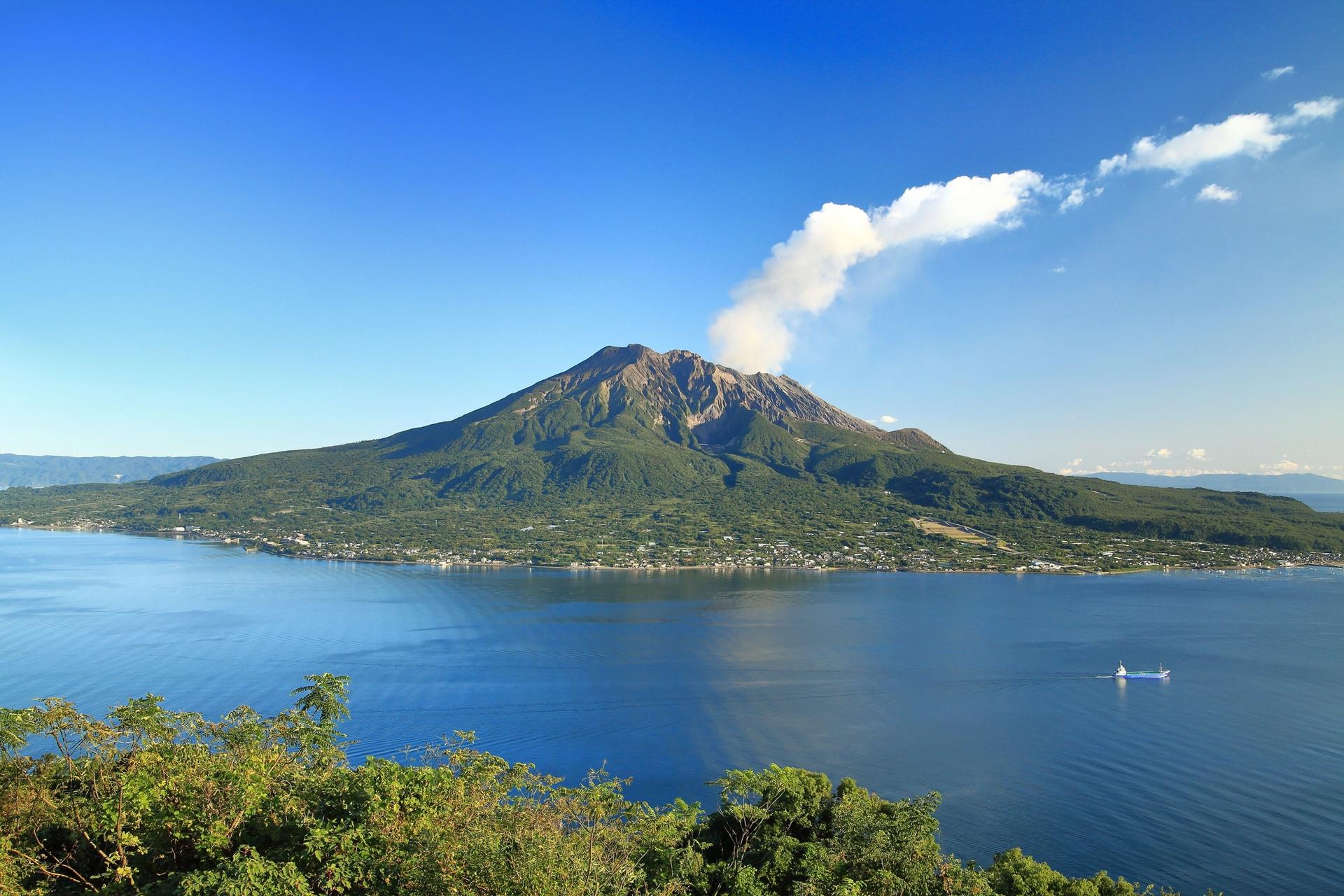
Just a boat ride away from Surtsey is the Eldfell volcanic cone, which is only 660 feet or 200 meters tall on the Icelandic island of Heimaey. Heimaey is a part of the infamous Westman Islands, a short ferry away from Southern Iceland. Eldfell is commonly referred to as the “Pompeii of the North, thanks to its most recent eruption.
This occurred in 1973 and the entire town had to evacuate the small island. The eruption unfortunately covered over 400 homes. Over time, Archaeologists have been uncovering the building's remains.
In fact, Eldheima has been built around this entire area, making it one of the most unique museums in Iceland. Eldheimar showcases the remains of one of the homes and you can take the self-guided audio tour throughout the museum.
The Iceland volcano tour will bring you through the zones and homes, teaching you about the events before, during, and after the eruption. An interesting way to learn about Iceland's volcanic history.
Today, visitors can hike up to the summit of Eldfell by taking the Eldfell Volcano Loop. This 3.2-mile Iceland volcano hike is rated moderate and can be done by most visitors. View the volcanic landscape from above and marvel at the black and red volcanic rock that surrounds you.
7. Laki

The largest eruption in Iceland occurred between 1783 and 1784 from the volcano of Laki. This eruption almost destroyed the entire country of Iceland. Lava cascaded throughout the landscape killing farms and livestock.
As a result, this caused the nation to go into starvation mode since all of the food was destroyed. In addition to the lava being an issue, there was also a mass amount of toxic gasses that came from the volcano, causing illness and more death throughout the nation. Over 9,000 people and livestock were killed during this devastating time.
Today, you can visit Vatnajökull National Park with your rental car in Iceland. Here you will find the Laki craters, more commonly known as the Fires of the River Skaftá. The craters were formed during the massive eruption.
You can reach the Laki craters by taking F 206, which is an F-road only accessed by a 4X4 Vehicle. Some sections of the road are rocky and full of potholes, but that is nothing our 4X4 vehicle cannot handle. You can only visit Laki during summer as the roads tend to close in the winter.
Laki has a majority of hiking trails for you to walk along to learn about the area! The Laki Trail is a short hike, only 2.4 miles, and 4 km, and is rated as moderate. This circular path takes an average hiker around one and a half hours to complete. You will be able to enjoy the breathtaking views of the crater row from here.
There is also a Visitor Trail that passes through the craters. The short walk is 03. Miles or 500 meters and paired with a guided leaflet. Follow the numbers on the leaflet which will give you information along your stops.
8. Fagradalsfjall Volcano
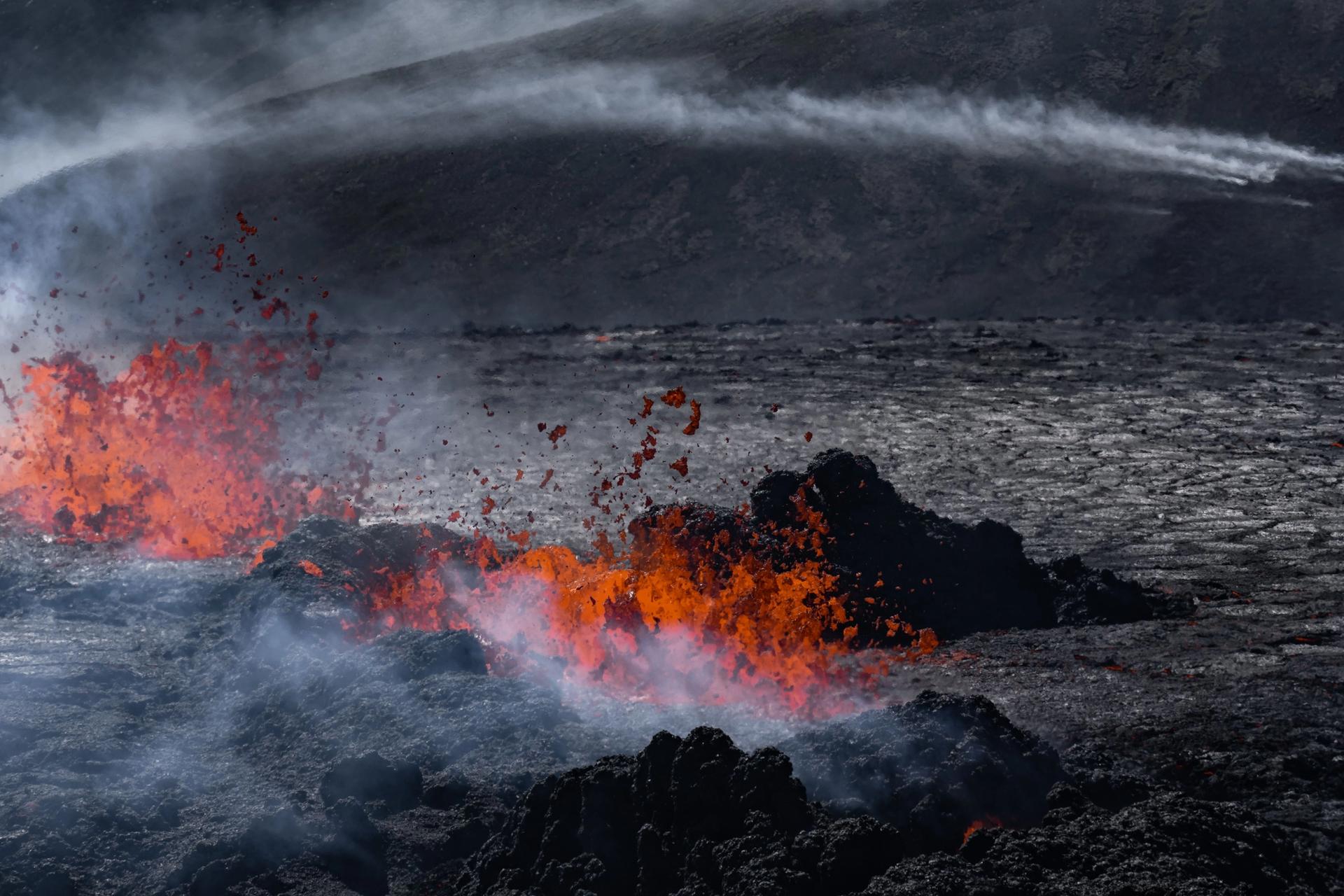
On March 19, 2021, the eruption of Fagradalsfjall shook the Reykjanes peninsula. , when a series of earthquakes took place.
After the shaking stopped there was a brief calm before the eruption and then a glowing light appeared in the sky. This indicated there was a minor eruption that did take place. Luckily it was not large enough to disturb the Icelandic people and their homes.
Now the Volcano is one of Iceland's top tourist attractions. This is mostly because you have a rare opportunity to see the freshly made lava and new volcanic crater.
You can hike along the volcanic field as there are a few different paths on the property that range from one to three miles.
This Iceland volcano hike is near Keflavik airport, making it a quick drive from Reykjavik. The Fagradalsfjall volcano is continuously erupting and is currently active too. Scientists have no idea how long it will be active, so hiking it will be a once-in-a-lifetime opportunity.
The hike to the new eruption site is not rated as easy and will take a whole day to complete since it is 8.4 miles in total, with an elevation gain of 1,984 feet. To be able to hike a currently active volcano is a bucket list item for many, so we recommend giving it a shot.
Please check for more information on Safetravel.is before attempting, as the volcano paths can be closed due to lava.
9. Katla

Katla is one of the most active volcanoes in Iceland. Since 930 AD, it has been known to erupt once every fifty years. The eruptions brought an enormous ash cloud to the area, due to the volcano sitting below a glacier. This caused livestock to be poisoned by the ash and crops to be completely ruined.
Spend your day hiking through the Leirhnjukur Lava Field, located in the Krafla caldera. The scenery has vibrant green landscapes and rising steam, a gorgeous area.
Sitting on top of Kafla is the Myrdalsjokull Glacier Park. The ice cap cascades over 232 square miles. You can take a tour to view Myrdalsjokull Glacier Park via snowmobiling on the glacier or even exploring the ice caves beneath it.
In order to get here all you have to do is take Ring Road for 150 miles until you reach the majestic Skogafoss Waterfall, an Iceland hot spot. From there then turn left onto a road that leads you to Sólheimajökull glacier. It is highly recommended to rent a 4X4 vehicle for this drive.
10. Mount Snæfel
Located on the Snaefellsjokull peninsula is the infamous Mount Snæfel. This is one of the most convenient locations to visit with your Iceland rental car as it's only a 3-hour drive from Reykjavik.
The last eruption in Mount Snæfell took place in 200 A.D, give or take 150 years. The volcano is still considered active even though it erupted a very long time ago. The volcano is a part of Snæfellsjökull National Park, which was established in 2001. This special place is the first national park to extend from the top of the mountain to the ocean.
You can hike Snæfell if you would like. First, take the 1-mile or 1.5 kilometers hike from the parking lot to the south of a hut called Snæfellsskáli where the trail begins. The trail to Mount Snæfel is 5 miles or 8 kilometers long and is rated as difficult due to its steep terrain.
You can visit The Snæfellsjökull glacier which sits on top of the mountain right beneath the volcano, which ironically has the same name Snæfel. This is where the book-turned-movie Journey To The Center Of The Earth was filmed.
11. Thrihnukagigur
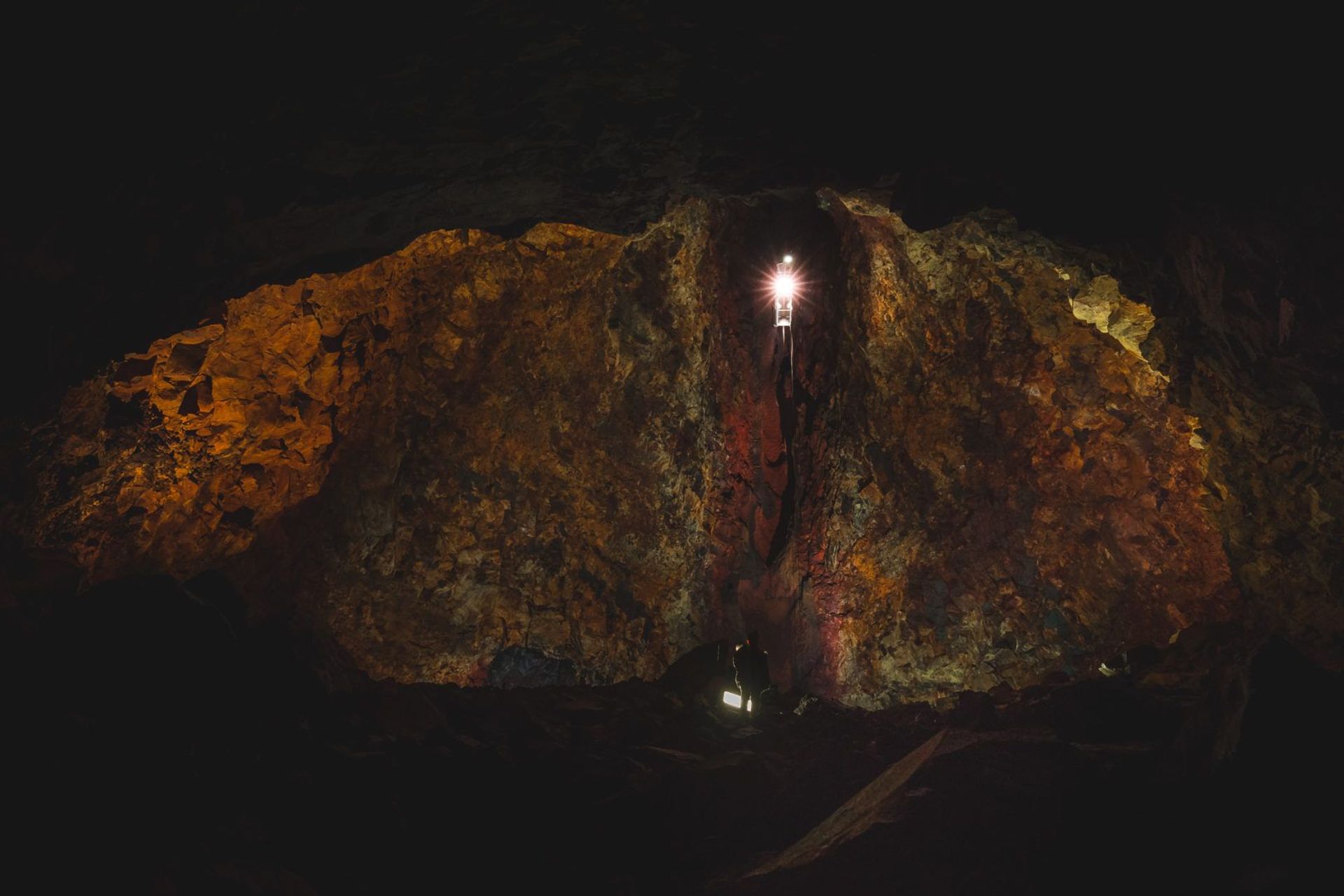
The list would not be complete without adding the only volcano in the world that you can actually go inside, Thrihnukagigur.
The volcano's last eruption was over 4000 years ago. Scientists say there is no chance it can erupt again, but never say never. Volcanoes are unpredictable, and climbing inside of you can provide you with a massive adrenaline rush.
Thrihnukagigur Volcano is the only place in the world where it's recommended to investigate a magma chamber from inside the volcano. The chamber is huge too and often compared to be the same size as a football field.
You can take this Iceland volcano tour with Inside The Volcano, which is operated by 3H Travel, a fully licensed tour operator in Iceland. They provide the right gear and equipment while guiding you through the volcano.
The tour features a 45–50 minute hike, which will bring you to the crater. You will then descend 1400 feet to the bottom of the crater in an open cable lift. There are only two ways to get to Thrihnukagigur and this Iceland volcano hike is one of them.
The other option is to use a helicopter, which may be expensive.
Frequently Asked Questions
Latest Blog Posts
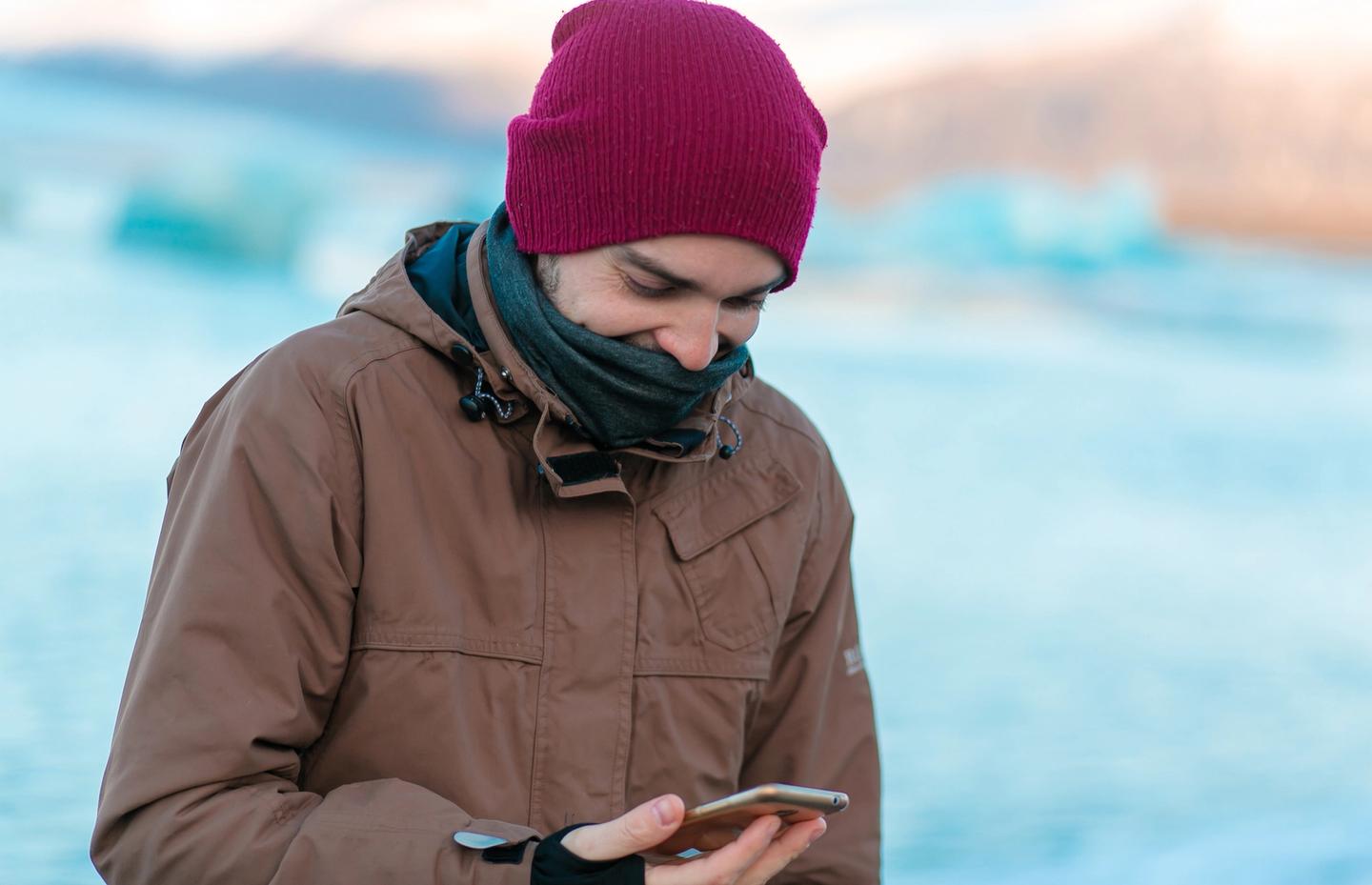 Rental Cars
Rental CarsTop 15 Apps for Your Car Rental Adventure!
Setting off on a once-in-a-lifetime journey through Iceland is the top way to explore it. This breathtaking country is filled with National Parks, black sand beaches, endless ocean views and so much more. Many even spend weeks driving the infamous Ring Road to appreciate it in its entirety.
 Guides
GuidesWhale Watching in Iceland: A Complete Tourist Guide
Iceland is home to 23 different species of whales! These marine mammals call the surrounding Arctic waters their home. In fact, people travel from all over the world to experience whale watching in Iceland. So when is the best time to see these majestic sea creatures and where are the best places to go? This guide will tell you what types of whales you may see and the best way that you can see them! Here are our tips on whale watching in Iceland!
 Guides
GuidesA List of Must-Visit Beaches in Iceland
Calling all beach lovers! Iceland has so many sandy treasures for you to explore. There is truly something for every traveler, from striking black beaches to golden sandy shores. Iceland’s beaches are located all over the country. So you can visit one, or all of the best beaches in Iceland, by taking a road trip. From famous locations to unknown treasures, we got you covered. Enjoy a full beach day in the land of fire and ice. So what are you waiting for? Grab your beach towel and let’s hit the road!